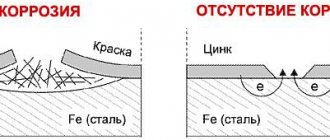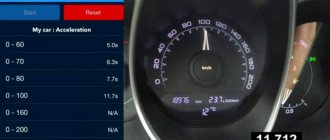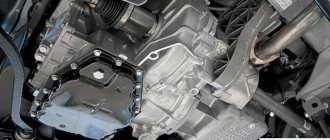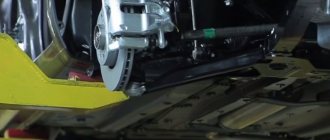Comparing Lada Vesta and Lada Largus, at first glance, will seem incorrect, due to the fact that both models occupy different niches in the market. However, they overlap in many ways. After all, many of those who were planning to purchase a Grant, Largus or Priora, after the new sedan entered the market, thought about changing their guidelines, sometimes to the detriment of their own needs. The same applies to potential owners of LADA Largus. Moreover, this decision is largely dictated by the parameters of the cars.
To come in
Already have an account? Sign in.
Latest Visitors 0 users online
No registered user is viewing this page
The new product from AvtoVAZ has already gained sufficient popularity. She is capable of trying to lure buyers of models that occupy a completely different niche in the market. Trying to understand which is better than Lada Vesta or Lada Largus, corresponding comparisons of appearance, dynamics and interior were made. The comparison may not look correct, but since the models are produced by the same representative, there is sufficient reason to compare them. "What to choose?" – this question is quite appropriate for car enthusiasts.
Car appearance
The history of the appearance of Lada Largus takes roots from the French subcompact car Renault Logan. This adds prestige and respectability to this vehicle. Lada Vesta is a newer and more modern car, and the advertising campaign to promote the car was carried out at a high level. It follows that the first impression made by competitors is on the same level.
Comparison of Lada Vesta and Lada Largus is reasonable, given the external and internal attractiveness of the sedan, spacious trunk and good cross-country ability. The Largus station wagon has an impressive body - this is its main trump card in the fight for buyers.
Potential buyers of the 7-seater model, those who really need it, are difficult to tempt with the new sedan. However, manufacturers are working on a similar universal package for Vesta. If you wait a little, you may be able to purchase a more popular model.
Let's sum it up
We made a comparison, and you probably decided which of the two models is better: LADA Largus or LADA Vesta. Purchasing a Largus station wagon will be a justified action only when there is an urgent need for this particular type of body, and the competitors the client likes are located very “far” outside this price segment. In all other situations, we recommend taking a closer look at the more modern, powerful, bright and original Vesta, which rightfully won the palm in our unusual comparative review.
General vehicle parameters
Comparison of Lada Vesta and Lada Largus The indicators differ, but not enough to confidently give preference to one of the models.
- Largus is slightly longer than its new opponent - 4470 mm. versus 4410.
- The width of the sedan exceeds the parameters of the station wagon - 1764 and 1750.
- The latter weighs a little more and has more interior capacity.
- Vesta, due to its configuration, is noticeably lower than Lada Largus - 1497 and 1670 mm.
- In terms of ground clearance, the proven station wagon has 145mm. The ground clearance of the new model is significantly higher (178 mm).
- The trunk volume of the Lada Largus is 560 liters, Vesta - 480, which is also quite a lot.
- The longitudinal distance between the axles of the front and rear wheels of the station wagon is much greater (2905 mm); Vesta has a wheelbase of 2635 mm.
Differences in technical characteristics
| Parameter | Lada Vesta SW | Lada Vesta SW Cross |
| Dimensions (length x width x height) | 4410 x 1764 x 1512 | 4424 x 1785 x 1532 |
| Curb weight | 1280..1350 kg | 1280..1350 kg |
| Ground clearance | 178 mm | 203 mm |
| Tires | 185/65 R15 and 195/55 R16 | 205/50 R17 |
The larger body dimensions of the cross-version are due to the presence of the original body kit.
Differences in suspension:
- Lada Vesta SW - the rear springs of the station wagon (compared to the sedan) were increased by 9 mm.
- Lada Vesta SW Cross - different shock absorbers and springs, different suspension settings. The track is 14 mm wider.
What do competitors look like externally?
Lada Largus looks like a car that came from another era.
- The front has straight lines, clearly visible headlights, round foglights, a slightly sloped hood, a black radiator with one chrome strip.
- The profile is also old-fashioned: the doors are defined by smooth outlines, the wheel rims are very simple in design. The exterior of Largus looks quite consistent, but not for our time.
- The rear area has sliding doors with large glass windows. There is a low bumper. Lada Vesta is more modern and sportier.
- The radiator grille smoothly merges into the air intake. Stylish headlights complement the memorable curves of the front part.
- The profile is designed in an interesting “X-style”, the roof of the car slopes back somewhat, and the split spokes of the wheels leave a good impression.
- The stern is distinguished by the trunk lid, bumper and large logo inscription.
Comparison of engines and transmissions of two models
Comparison of engines The sedan has complete superiority in dynamics, maximum speed and fuel consumption. The designers remind us that new modifications of Vesta engines will be developed in the future. No such ideas are foreseen for Largus; it will drive on old models of engines.
The Lada Vesta has an internal combustion engine of 106 hp/1.6 l. The car accelerates to hundreds in 12 seconds. (with AMT – 12.8). The maximum speed of the sedan is 178 km/h. Fuel consumption in the city is 8.9. The station wagon has an engine with a power of 87 hp. /1.6 liters. A heavy car with poor aerodynamics accelerates to hundreds in 14.2, and the maximum speed is determined at around 160 km/h. The car consumes 10.5 liters of gasoline in the city.
Largus modifications have only a 5-speed manual transmission. Vesta has two “mechanics” and one AMT installed. The build quality and functionality of the new product's gearbox are superior to the opponent's transmission. Vesta does not have a machine gun, which was abandoned in favor of a domestic robot.
Transmission
Largus can only boast a 5-speed manual transmission. Vesta has two mechanical transmissions, and in addition, an AMT-type robotic gearbox. Vesta's transmissions are also 5-speed, but of much higher build quality than those of Largus. Its gearbox is more comfortable due to new synchronizers and an enlarged shaft, which reduce noise.
AvtoVAZ abandoned the automatic transmission in favor of a robotic one. The motivation for this solution is low cost and ease of maintenance and operation.
Chassis and interior
The suspension of both cars is the same, but the handling of the new Lada is better, since the chassis has a larger number of chips, and the car is not burdened with a heavy body. Vesta thoroughly confirms that this is a modern vehicle. The station wagon's interior is simple and discreet.
- Inside the Vesta's cabin, you can see high-quality finishing materials, a steering wheel that fits comfortably into your hands, thick seats, plenty of space in the back, and a suitable color scheme.
- The interior design of Largus is distinguished by straight lines, metal inserts on black plastic and simple indicators on the control panel. The monotony is slightly reduced by orange colors. The station wagon's interior is quite comfortable, but boring.
What is the difference between station wagons and trim levels?
Additional options that only Lada Vesta SW Cross has:
- Original off-road body kit.
- Body color "Mars" (orange, 130).
- Interior color (orange trim).
- Decorative exhaust pipe nozzle.
Dimensions and exterior
The appearance of the Lada Cross has not yet become familiar on the streets. First, buyers will try the station wagon, and then traditionally will pay attention to the all-terrain version. The signature X-shaped style of the radiator grille and body sides has not gone away and continues to develop in the new model from Tolyatti. The most equipped Exclusive variant has colors unavailable for the sedan, and the roof and rear-view mirror housings are painted in high-gloss black.
Vesta Cross length is 4424 mm, vehicle width is 1785 mm, height with roof rails is 1532 mm. The “Cross” version is 4 millimeters longer and 2 centimeters higher than the “asphalt” station wagon due to large 17-inch wheels, increased ground clearance and black lining on aggressive-looking bumpers.
Length of Lada Largus Cross - 4470 mm, width - 1756 mm, height - 1682 mm. Ground clearance is 195 mm, which is 25 mm more than the “road” version.
There are few external differences between Largus Cross and his brother, but if you look closely you notice the details. The regular Largus is equipped with 15-inch wheels, and the Cross is equipped with 16-inch wheels, while the spare wheel on the “regular” version is 15-inch, complete, and the Largus Cross has a 15-inch spare wheel. Alloy wheels on Largus are available only in the maximum configuration, while Cross has them by default. The Cross body is covered with unpainted plastic around the perimeter: unpainted bumpers, door sills and arches. A couple of years after the car entered the market, reviews of car owners often began to mention bugs under the plastic and worn paint. This is due to the fastening of the protection, which does not fit tightly to the body.
Price difference
- Lada Vesta SW from 639,900 to 804,900 rubles.
- Lada Vesta SW Cross from 755,900 to 847,900 rubles.
Having an amount of about 760 thousand rubles, the buyer begins to think about which of the two station wagons is better to buy:
- Lada Vesta SW 1.8L with manual transmission in the Luxe Multimedia package for 761,900 rubles.
- Lada Vesta SW Cross 1.6l with manual transmission in Luxe configuration for 755,900 rubles.
A regular station wagon will have:
- More powerful engine.
- Multimedia system with navigation 7".
- Rear view camera.
A regular station wagon will not have:
- Original body kit.
- Body color "Mars".
- Orange interior trim.
- Exhaust pipe nozzle.
- Increased ground clearance.
- A different suspension (different from the sedan).
- Alloy wheels R17 (will be R16).
Car interior
The interior decoration of Vesta Cross is more similar to its classmates from Korea. The plant motifs are the same here - the lines are smooth, there are almost no sharp corners or straight shapes. The car is not like other models of the Tolyatti plant: the Vesta series stands apart from them. The instrument panels are in three deep, large wells, the seat cushions are long and moderately hard, and in the center console there is a multimedia screen with a border of air ducts. Everything is convenient and at hand.
The interior of the Lada Largus Cross is distinguished by diamond-shaped stitching on the seats and gray inserts in the dashboard. They can also be orange, adding bright touches to a restrained, if not boring, interior. You don't need to pay extra for them.
Compare configurations and prices
By analogy with the sedan, Vesta Cross is offered in three versions: Classic, Comfort and Luxe.
The initial Classic version costs just under 600 thousand.
The list of equipment in this equipment option already includes everything necessary from the list of requirements for a modern car: driver and front passenger airbags, ISOFIX child seat mounts, child locking of the rear doors, automatic door locking when driving, automatic door unlocking and hazard warning lights. in case of a collision, immobilizer, security alarm, daytime running lights, ERA-GLONASS emergency warning system, anti-lock brakes with emergency brake booster, electronic brake force distribution, stability control, traction control, hill start assist, electric front doors , heated front seats, electric drive and heated exterior mirrors.
Summary of comparison between Vesta SW Cross and Largus Cross
When creating the Lada Largus Cross, AVTOVAZ engineers were faced with the task of maintaining the handling of the cross-version at the level of a regular station wagon. You won’t be able to notice the difference between a “raised” car and its road version on a good road. But on dirt roads or broken asphalt, the Largus Cross slightly improves in terms of ride smoothness due to the increased rolling radius of the wheel and wider tires.
Largus with the “Cross” prefix spends more gasoline than a simple station wagon. This is 1.4 liters in the city and 0.8 liters on the highway. This is due to changed gear ratios, larger wheels and an additional 35 kilograms of weight. An important nuance: the 102-horsepower sixteen-valve Largus Cross engine is designed for AI-95, and the eight-valve unit of the “regular” Largus can be powered by the 92. The difference in maintenance costs is significant.
Largus Cross costs as much as a well-equipped Vesta Cross. It has just as many options and can carry more cargo thanks to its van-shaped body. On the other hand, many will be put off by the appearance of this car and the interior, which evokes memories of the French automobile industry of the early 2000s. Vesta Cross looks more interesting in appearance, and if AVTOVAZ, as they say, worked on stable build quality, then there is only one option left in the same price category - the new Lada model.











